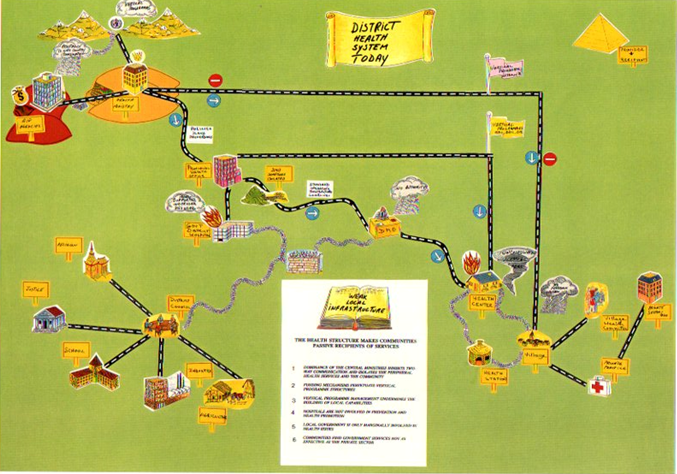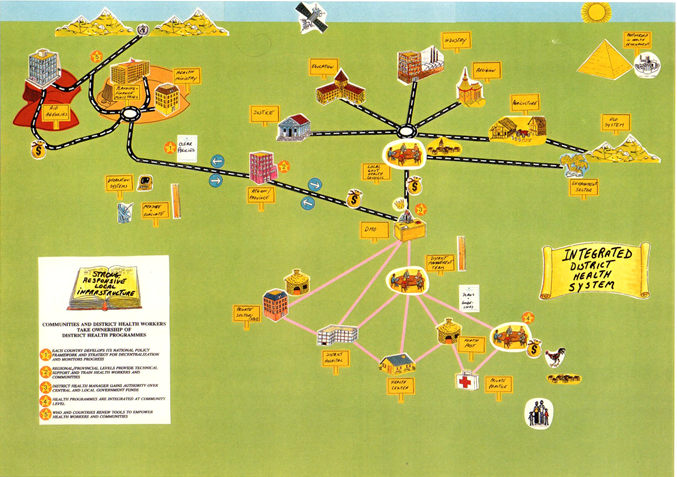World Heath Organization’s Management Effectiveness Program & Use of Village Mapping
During the 1990′s, the WHO was concerned that public health systems in less developed countries had weaknesses in their organizations and processes and were not serving their populations at the level they were capable of. Problems included a unique focus on treatment rather than on health– including the environment and preventative measures, as well as treatments. WHO developed a Management Effectiveness Program (MEP) with the goal of introducing quality management techniques into public health systems. Village Mapping was a key component of the MEP. It was selected because of its ability to bring together people of varied backgrounds, ensure good communication among them, stimulate big picture thinking about weaknesses, and establish an agreed goal.
A person’s or a community’s health is the result of a system. Understanding that system at a high level is a critical component to being able no manage and improve it. This understanding of the health system comes in three steps:
- Knowledge of the people, facilities and organizations who are stakeholders in the health system is the first step to understanding
- Comprehending the quality of relationships between the component parts of the system
- Forming a view of which areas function well and which are weak
Village Mapping is a workshop process that employs the metaphor of a village to establish a sufficiently high level view so that the whole of the system can become visible, Participants employ a vocabulary of sticker symbols to build maps of the health system, their metaphoric “village”.
The key process participants are brought together for a day, including doctors, nurses, local community leaders, environmental, food, and water specialists, administrators and others. Each workshop participant has only a partial knowledge of the health system, but, the workshop and map building processes generates a complete view of the structure and flow of the system and its weaknesses. The groups then build maps of how they want public health to function when they have solved their problems and met their health and process quality objectives.
Village Mapping was very well received and proved an effective part of the overall quality and change process. Here are example maps developed at the outset of the program:


